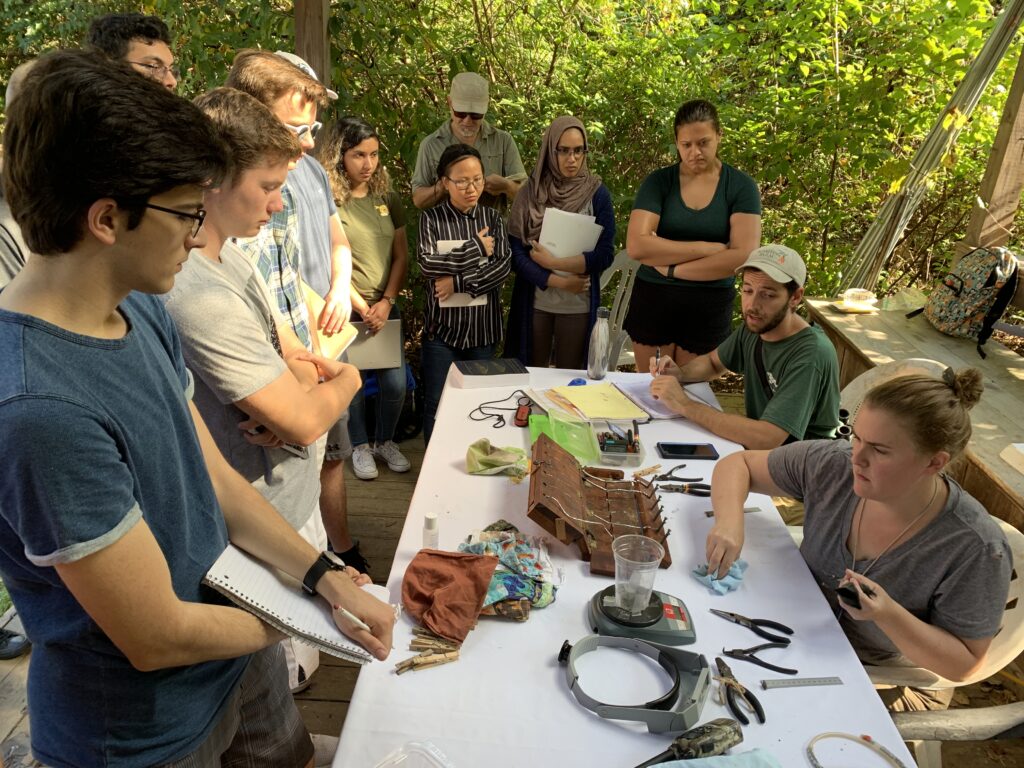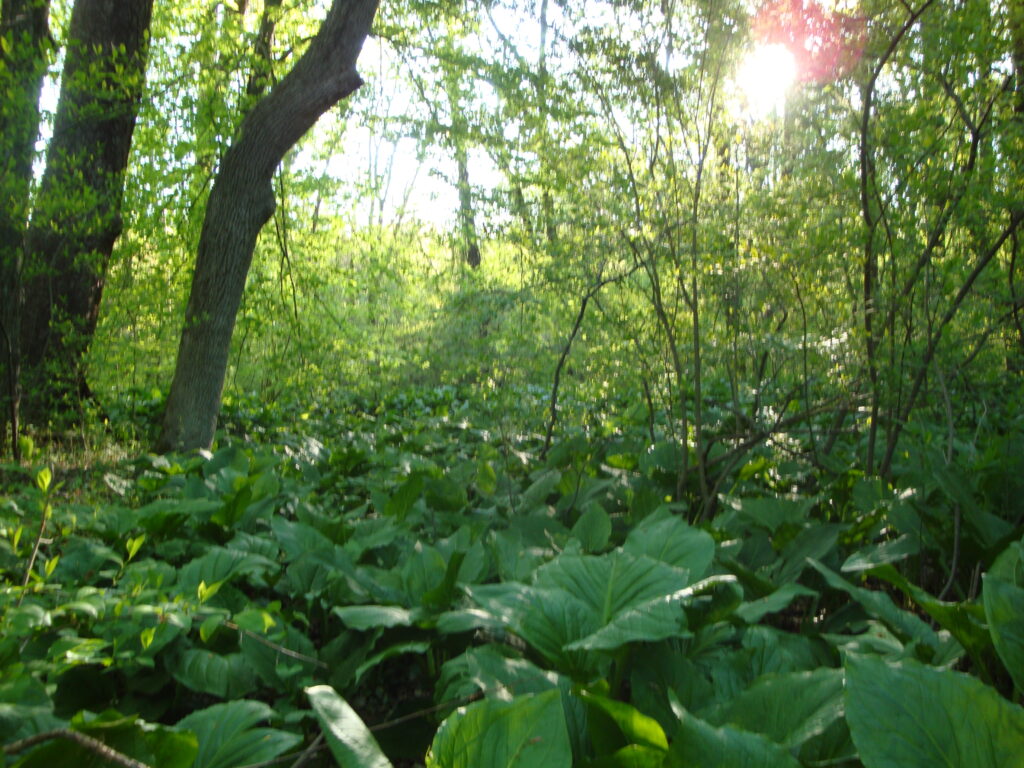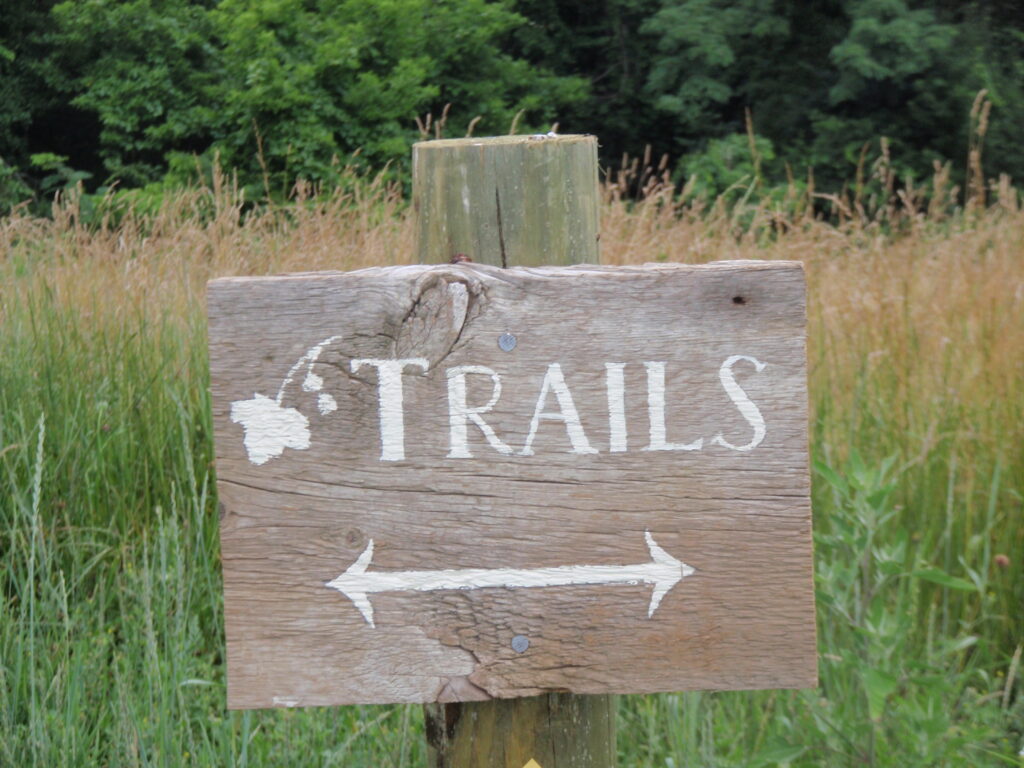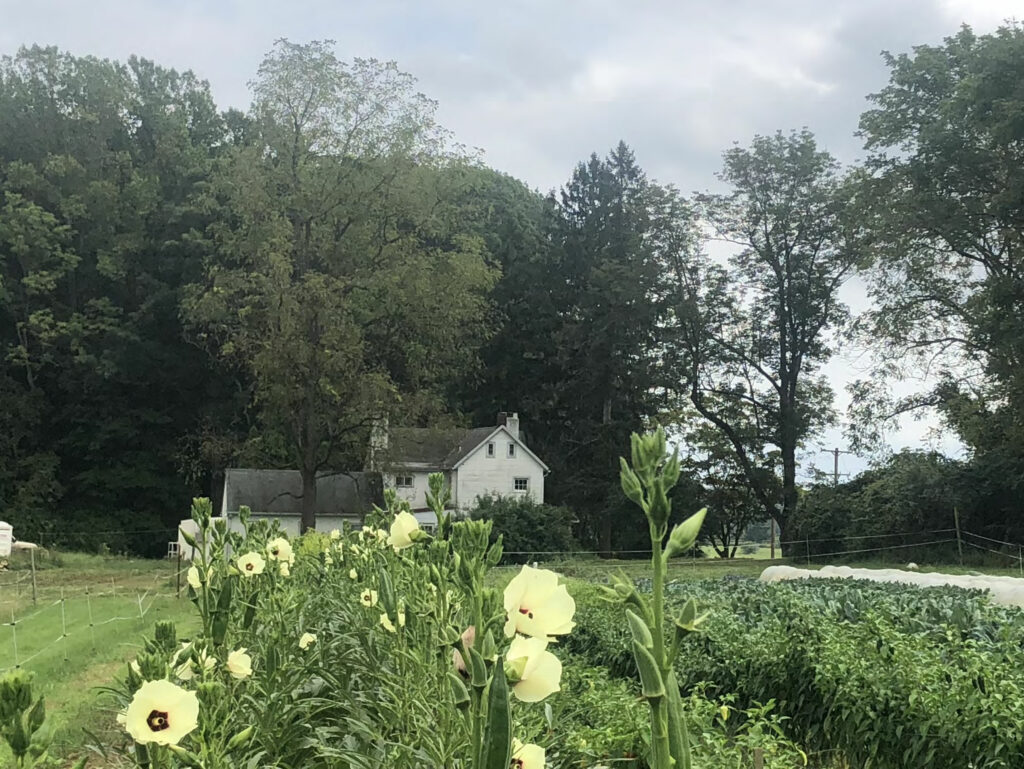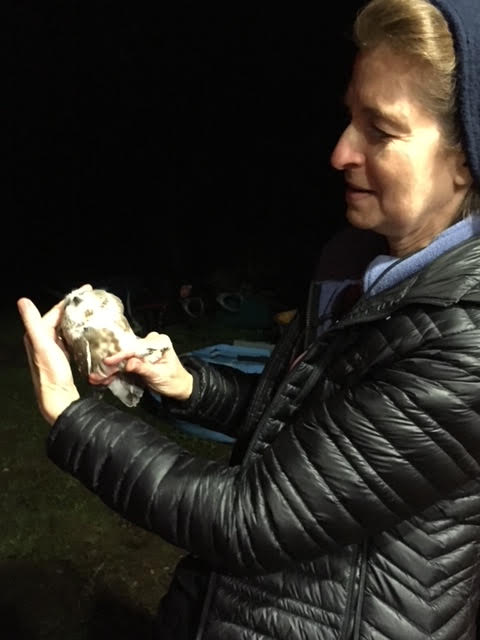Across all of our preserves and properties, Willistown Conservation Trust boasts unique habitat supporting a wide variety of native wildflowers. Each place has distinct characteristics, creating different experiences and diverse species everywhere you go. You can find wildflowers in bloom at our preserves throughout the seasons, peaking in mid-summer during Wildflower Week. Spend time at each one to appreciate the full palette of our native wildflowers!
Rushton Woods Preserve is a great place to see a wide variety of wildflower species. The formal plantings and rain garden around the Rushton Conservation Center (RCC) are perfect inspiration for your own yard. Look especially during Wildflower Week for the purple coneflower, false sunflower, cutleaf coneflower, purple blazing star, and butterfly weed. Meadow strips also surround Rushton Farm, providing food and habitat for helpful insects, birds, and pollinators. These come to life in the summer and remain lush and colorful through the fall.
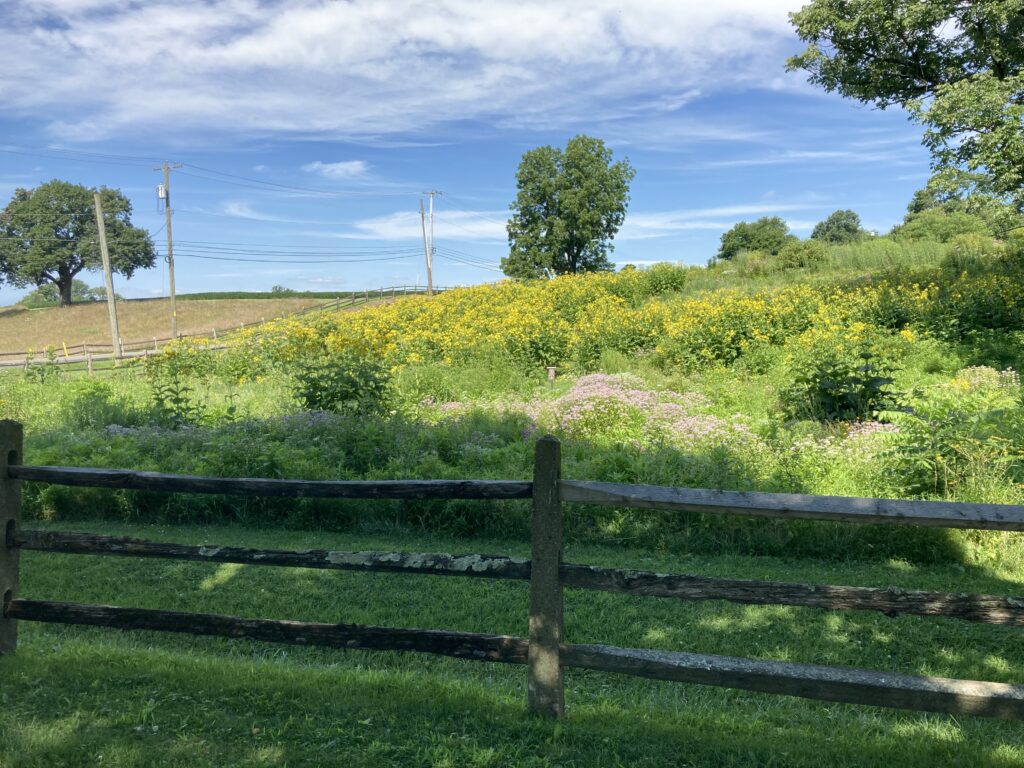
Hartman meadow 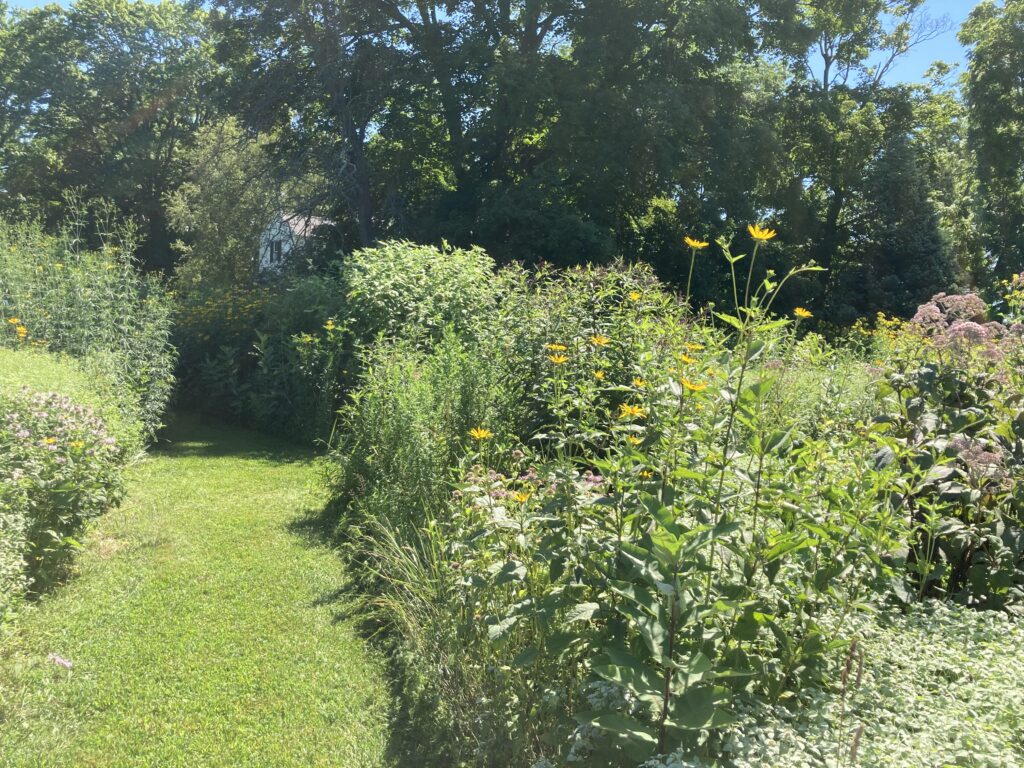
Hartman Meadow
Down the road at Kirkwood Preserve, over 80 acres of grasses and wildflowers provide key habitat for picky bird species that will only nest in these large, open areas. Vast drifts of milkweed and dogbane give way to goldenrod and ironweed as summer moves into autumn, but don’t overlook the native grasses, such as big bluestem and Indian grass, which provide beautiful color and texture. Climbing the trail to the top of the hill will give you an awesome vantage point to look out over all of the colors below.
At Ashbridge Preserve, a gas line right-of-way ensures that a large strip of land remains unforested. This right-of way actually provides great meadow habitat, with beautiful views across Ridley Creek. Most of the preserve is part of the floodplain wetland, so you will find wildflowers that grow in moist soil, such as soft rush and swamp hibiscus. If you follow the trail past the first creek crossing and through the woods, you will be rewarded when you re-emerge into the meadow and see mixes of goldenrod, joe pye weed, milkweed, and ironweed.
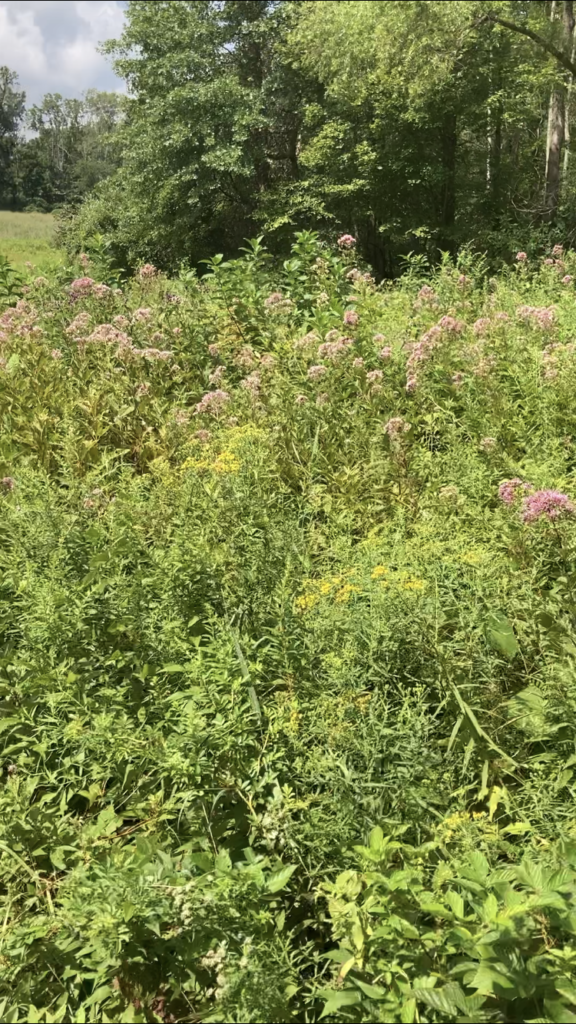
Ashbridge Meadow 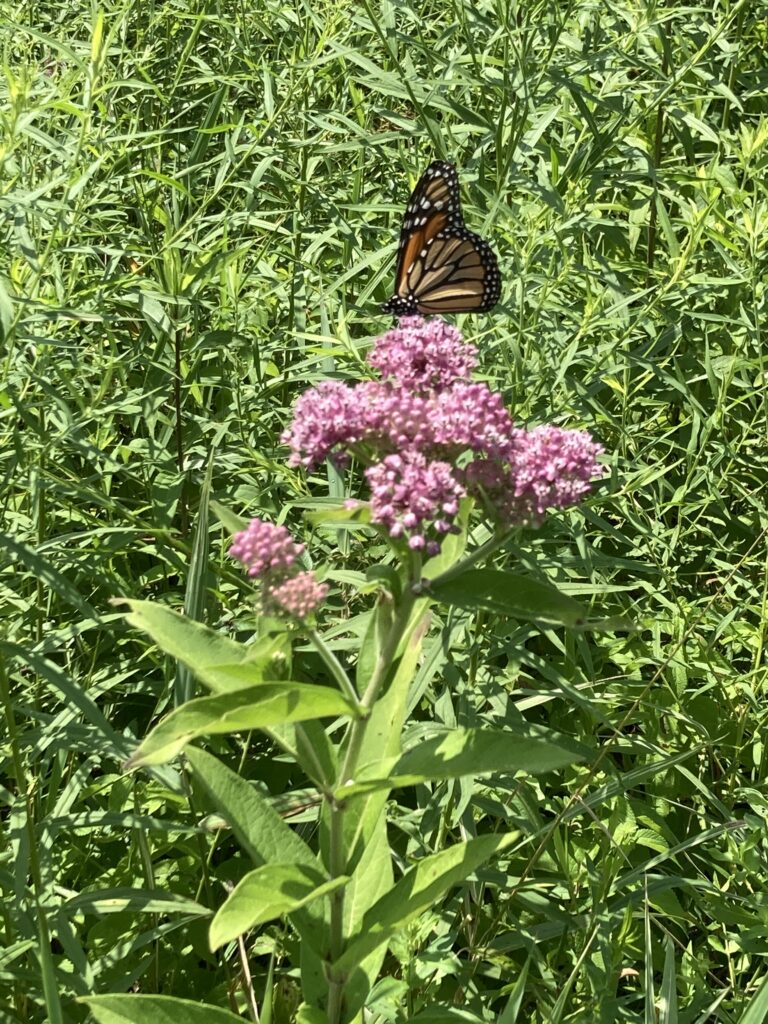
Milkweed
If you need a break from the sun, follow our trails into the woods at the preserves; you can find shade-loving wildflower varieties too! The forest floor looks brilliant in the spring, when ephemerals such as toothwort, bloodroot, spring beauty, mayapple, trout lily, and trillium emerge. It explodes with color again in the fall, when masses of snakeroot, white wood aster, big leaf aster, and jumpseed bloom. You can find some of these species in the garden at the Trust office, a great place to look for inspiration for a native shade garden of your own. While you’re there, be sure to walk through Hartman Meadow to see the gorgeous mixes of milkweed, joe pye, coneflowers, mountain mint, spiderwort, bergamot, and more.
There is interest and inspiration to be had all around WCT’s preserves, farm, and gardens any time of year. Our native wildflowers not only look beautiful, but also provide the habitat and food necessary to ensure a healthy ecosystem. Stop by all of our preserves during Wildflower Week and beyond — I hope to see you there!




